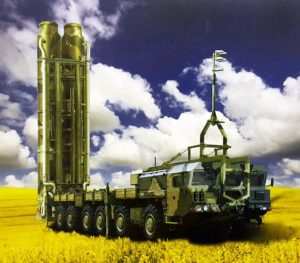
U.S. defence officials claim that Russia successfully tested its PL19 – Nudol antisatellite (ASAT) missile from the Plesetsk Cosmodrome on 26 March 2018, according to the online geopolitics and current affairs magazine The Diplomat.
The 26 March test was apparently the first to be launched from a transporter-erector launch (TEL) system, and is reportedly the sixth test flight of the Nudol and furthermore its fourth successful test, according to anonymous U.S. defence officials who spoke to The Diplomat.
According to The Diplomat, “The Nudol was first successfully tested in late-2015 and is part of a suite of next-generation kinetic interceptor systems in development by Russia, which also include the S-500/55R6M surface-to-air missile system and the A-235 next-generation anti-ballistic missile system, which will replace the A-135 systems that protect Moscow today.”
The Nudol has a lot in common with Russian midcourse ballistic missile defence systems, but U.S. intelligence has maintained the assessment for some time that the Nudol variant is in fact a dedicated mobile ground-based kinetic-kill ASAT interceptor.
If true, the reported test is the latest development in what a large number of space security experts around the world believe to be a growing space arms competition among the major powers, in particular the United States, Russia, and China. In recent testimony to the U.S. Congress, senior U.S. intelligence officials and commanders of U.S. military space forces have asserted that China and Russia are developing ASAT capabilities that threaten the satellites operated by the United States and its allies.
Dan Coats, the U.S. Director of National Intelligence – the most senior intelligence official in the United States – told Congress on 6 March 2018 that:
Both Russia and China continue to pursue antisatellite (ASAT) weapons as a means to reduce US and allied military effectiveness. Russia and China aim to have nondestructive and destructive counterspace weapons available for use during a potential future conflict. We assess that, if a future conflict were to occur involving Russia or China, either country would justify attacks against US and allied satellites as necessary to offset any perceived US military advantage derived from military, civil, or commercial space systems. Military reforms in both countries in the past few years indicate an increased focus on establishing operational forces designed to integrate attacks against space systems and services with military operations in other domains.
Coats added that:
Russian and Chinese destructive ASAT weapons probably will reach initial operational capability in the next few years. China’s PLA has formed military units and begun initial operational training with counterspace capabilities that it has been developing, such as ground-launched ASAT missiles. Russia probably has a similar class of system in development. Both countries are also advancing directed-energy weapons technologies for the purpose of fielding ASAT weapons that could blind or damage sensitive space-based optical sensors, such as those used for remote sensing or missile defense.
Russian officials, however, have expressed similar concerns about the weaponisation of space given U.S. missile defence capabilities, and discussions in Washington, DC, about building a space-based missile defence capability that could not only destroy (in theory at least) ballistic missiles in the boost phase, but could also be plausibly used to target Russian and Chinese satellites in orbit. Russia’s foreign minister, Sergei Lavrov, is quoted as saying at an international arms control meeting in January 2018, that, “All other countries understand the urgency of this problem but the United States continues nurturing plans to militarize outer space, in the sense of the deployment of weapons in outer space, which will, naturally, add another negative dimension to the problems of international security.”
 SpaceWatch.Global An independent perspective on space
SpaceWatch.Global An independent perspective on space




